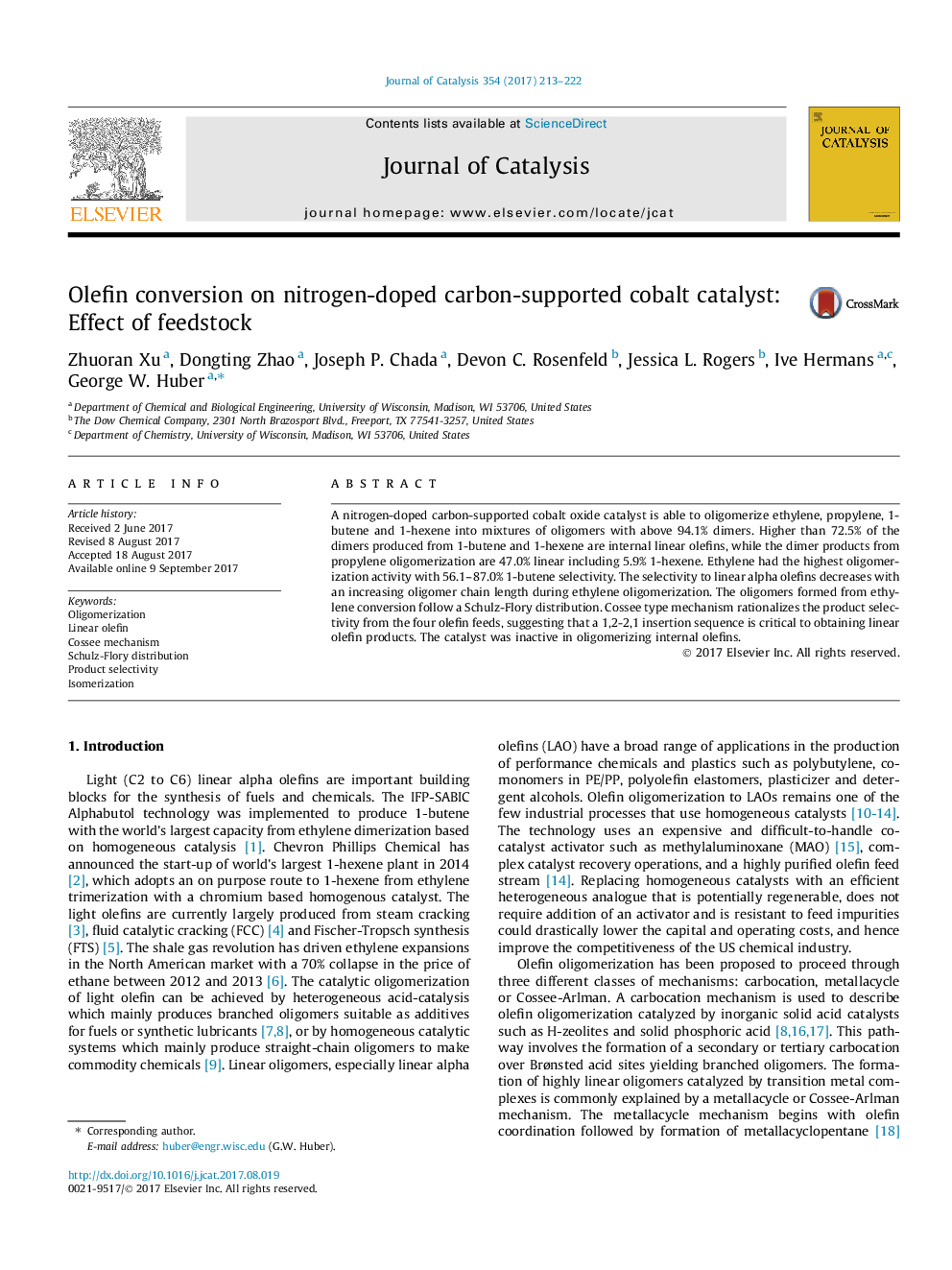| Article ID | Journal | Published Year | Pages | File Type |
|---|---|---|---|---|
| 6455513 | Journal of Catalysis | 2017 | 10 Pages |
â¢CoOx/N-C dimerized light olefins into mixtures of linear oligomers.â¢Olefin conversion catalyzed by CoOx/N-C follows a Cossee-Arlman mechanism.â¢Ethylene oligomerization produced higher linear alpha olefin products.â¢Both 1-butene and ethylene produced a Schulz-Flory distribution of oligomers.
A nitrogen-doped carbon-supported cobalt oxide catalyst is able to oligomerize ethylene, propylene, 1-butene and 1-hexene into mixtures of oligomers with above 94.1% dimers. Higher than 72.5% of the dimers produced from 1-butene and 1-hexene are internal linear olefins, while the dimer products from propylene oligomerization are 47.0% linear including 5.9% 1-hexene. Ethylene had the highest oligomerization activity with 56.1-87.0% 1-butene selectivity. The selectivity to linear alpha olefins decreases with an increasing oligomer chain length during ethylene oligomerization. The oligomers formed from ethylene conversion follow a Schulz-Flory distribution. Cossee type mechanism rationalizes the product selectivity from the four olefin feeds, suggesting that a 1,2-2,1 insertion sequence is critical to obtaining linear olefin products. The catalyst was inactive in oligomerizing internal olefins.
Graphical abstractDownload high-res image (57KB)Download full-size image
